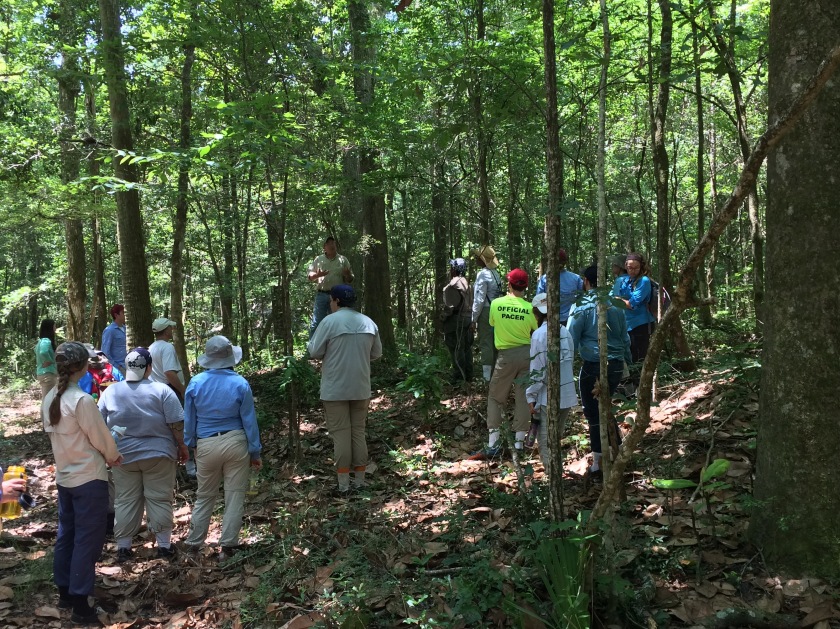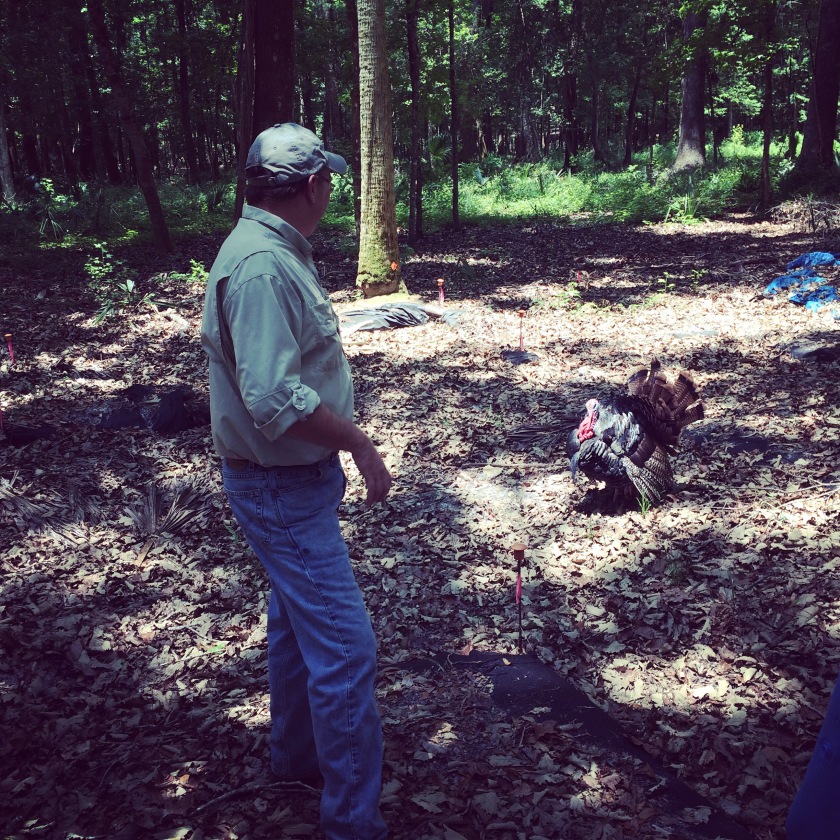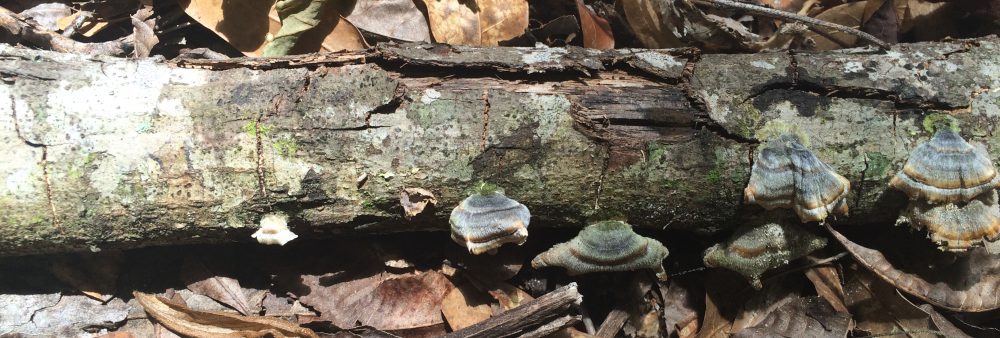– post by Dr. Peres
Today we worked in our units and on the topo map until about noon. Then we packed up and headed to a neighboring site (in the Wildlife Refuge) for a guided tour by the Southeast Archeological Center’s Jeff Shanks. The site we visited has a Weeden Island village and shell ring and an older Swift Creek shell ring. This is similar to our field school site which is a Weeden Island village and shell ring with a Swift Creek component. We are finding similar types of artifacts and, hopefully, we will encounter similar types of features.

Jeff’s tour gave us a lot of insight into just how big these sites are. They are really massive. They have also been hit pretty hard by looters over the years. Numerous looter pits can still be seen, which to the professional archaeologist, is heartbreaking. Any digging into an archaeological site is destructive, and illegal when done on state and federal properties.
Archaeological sites located on federal lands are protected by the Archaeological Resource Protection Act (ARPA) of 1979. ARPA made it illegal to remove, damage, vandalize, excavate or destroy archaeological materials from lands owned by the U.S. Government. When an digs into an archaeological site to get artifacts, the data surrounding that artifact (including its location, its relationship to other artifacts and evidence of human activity) is lost forever. Taking artifacts from the surface is also prohibited. In many cases, artifacts on the surface may be all that remains of an archaeological sites and their removal will further restrict our knowledge of what may have occurred at that particular location.
ARPA violations come with stiff penalties:
- For a felony offense, first time offenders can be fined up to $20,000 and imprisoned for up to one year.
- Second time felony offenders can be fined up to $100,000 and imprisoned for up to 5 years.
- Section 7 of ARPA enables Federal or Indian authorities to prosecute violators using civil fines, either in conjunction with or independent of any criminal prosecution.
- Section 8 (b) of the statute allows the court or civil authority to use forfeiture of vehicles and equipment used in the violation of the statute as another means of punishment against convicted violators.
Above all, archaeological and historic sites that are located on federal and state properties are there for the benefit of all. The taking of artifacts or looting of a site steals knowledge of our collective past from all of us. All for the personal gain of an individual or small group of individuals.

